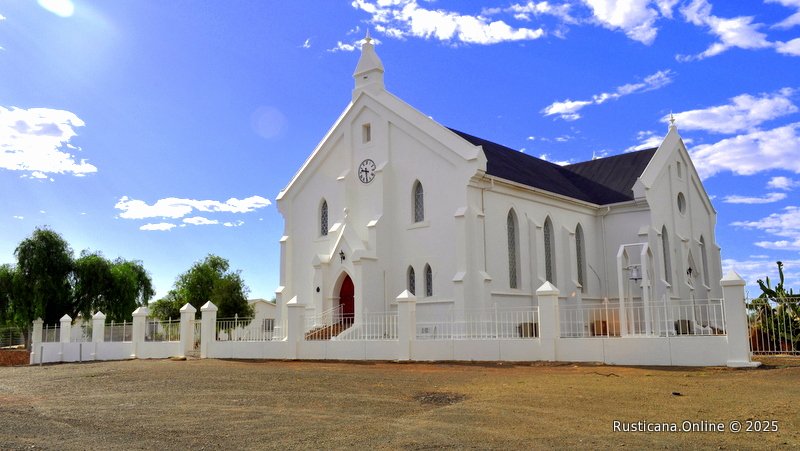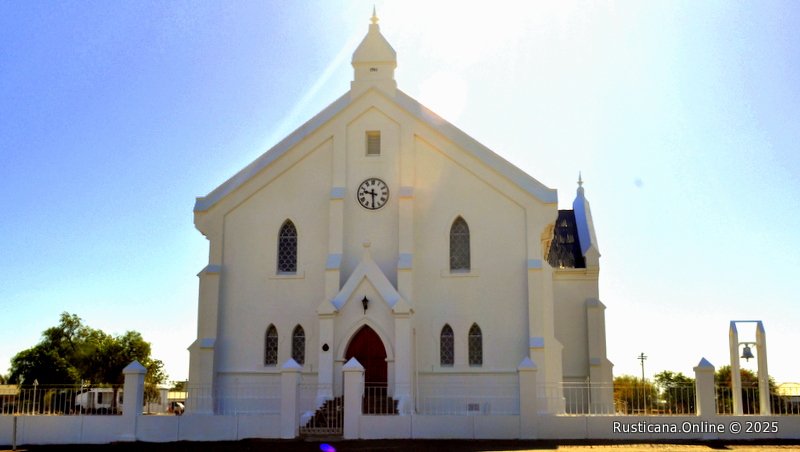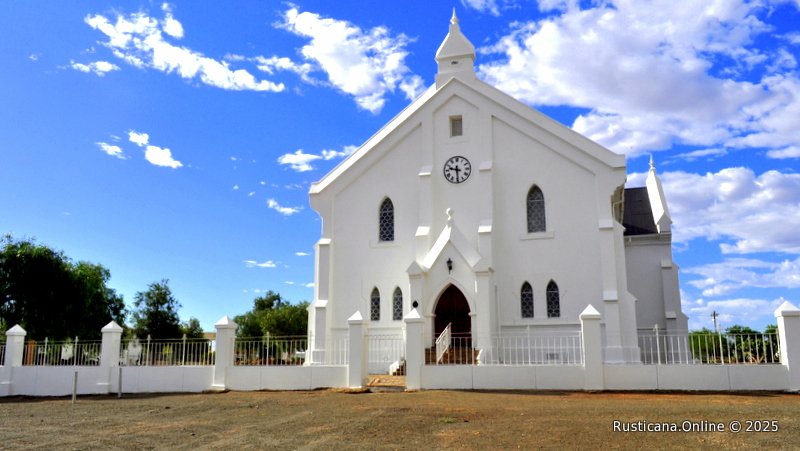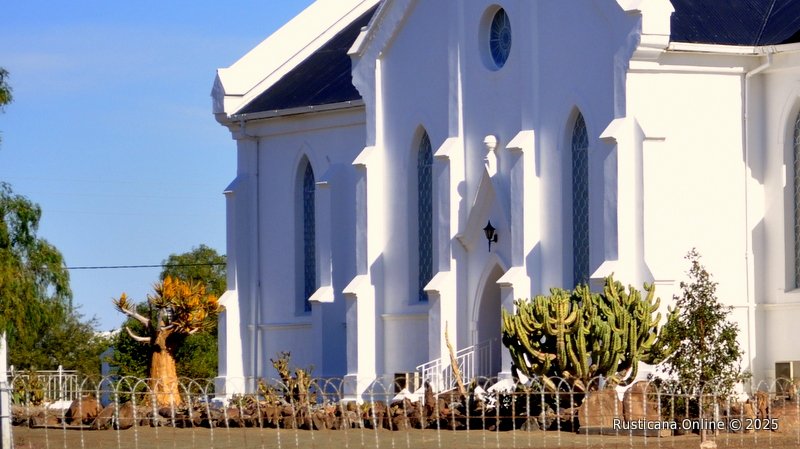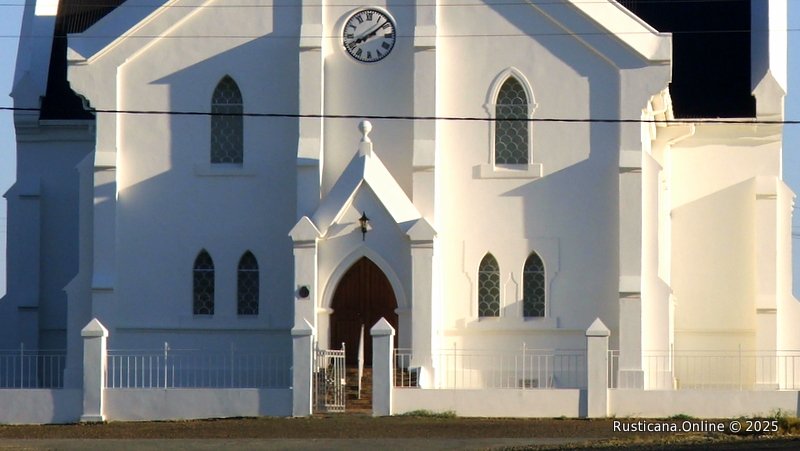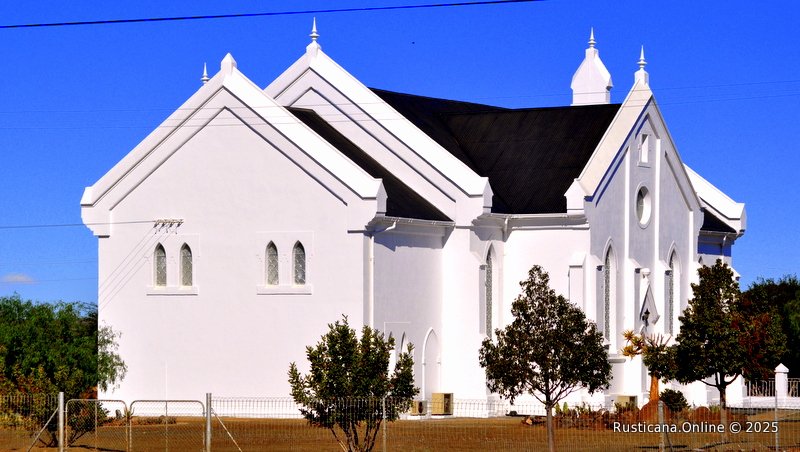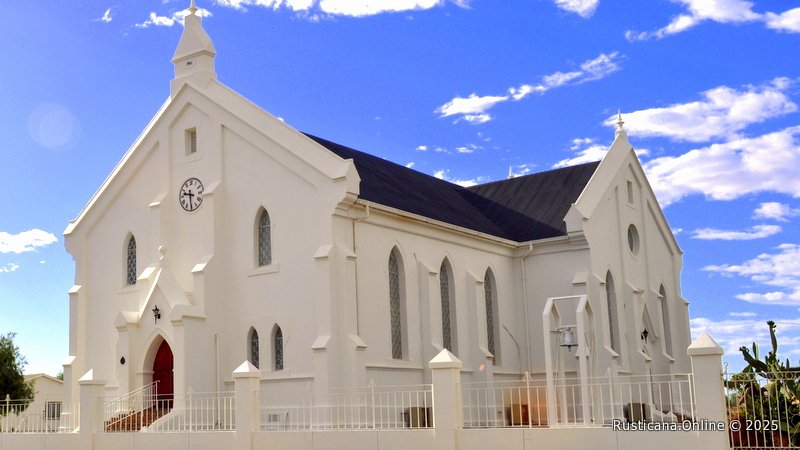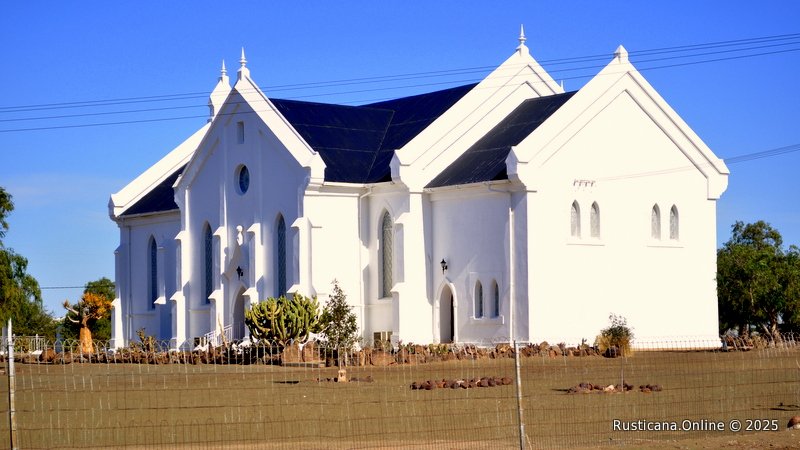(Dutch Reformed Church ,Northern Cape Sinod - Nederduitse Gereformeerde Kerk, Noord Kaapland Sinode)
In the vast, sun-baked expanse of the Northern Cape, where dust devils dance on the horizon and the quiet whispers of the veld carry tales of endurance, lies the Dutch Reformed Church congregation of Brandvlei. A constituent part of the esteemed Synod of the Northern Cape, Brandvlei, as of 2016, numbered 142 professing members and 31 baptised souls, a testament to the enduring faith nurtured within its walls.
The story of Brandvlei's spiritual inception began on a pivotal day: October 6, 1897. It was then that the Presbytery Commission of Tulbagh, with foresight and determination, carved out this new congregation from the sprawling parishes of Calvinia, Kenhardt, and Williston. The newly formed community, though small, was ready to blossom.
The inaugural Holy Communion, a sacred milestone, was administered in January 1898 by the dedicated Rev. Alheit of Ceres. His journey, a remarkable 480 km trek across challenging terrain, underscored the profound commitment to shepherd this fledgling flock. In those nascent years, the land was sparsely populated, and the village of Brandvlei itself was a modest cluster of some 50 inhabitants. Yet, even in this isolated outpost, the seeds of community were taking root. A small school already served the educational needs of the children, and it was within its humble walls that Sunday services found their first home.
Among the early pillars of this nascent community was Mr. Stals, the schoolteacher. His influence would prove profound and enduring. For half a century, the older residents of Brandvlei would recount tales of his fruitful and dedicated life, a legacy woven into the very fabric of the congregation's history. Mr. Stals, more than just an educator, was a guiding light, shaping not only young minds but also the spiritual landscape of Brandvlei.
The Genesis of Faith: Brandvlei's Early Years
In its nascent years, the Brandvlei congregation found an unexpected shepherd in Stals. While the minister from Calvinia was officially tasked with oversight, the formidable 160 km journey by horse-drawn carriage rendered frequent visits impractical. Thus, Stals became the de facto spiritual leader, conducting services and officiating at funerals, nurturing the fledgling community through its formative period.
Despite lacking a dedicated pastor or teacher for its first eight years, the congregation's unwavering diligence and vigilance bore remarkable fruit. Their collective spirit culminated in a momentous occasion on July 15, 1905, when the cornerstone of their magnificent church building was laid. This house of worship, consecrated later that same year, was a testament to their dedication, constructed with such enduring quality that it remained in excellent condition for decades. Even in 2015, it continued to serve its sacred purpose, a beacon of faith for the community. The total cost, approximately £6,000, was remarkably modest, especially considering that building materials had to be transported an arduous 480 km from Ceres station. This enduring structure stands as a testament to the early Brandvlei congregants' profound faith and tenacious spirit.
A Decade of Perseverance: The Quest for Spiritual Leadership
For six long years, the fledgling congregation yearned for a shepherd. Call after call was extended to potential ministers, each met with disappointment, leaving the faithful adrift in a sea of anticipation. The echoes of their fervent prayers seemed to go unanswered, casting a shadow of uncertainty over their burgeoning community.
Then, in 1906, a beacon of hope emerged. The Reverend C.W. Alheit answered their persistent call, stepping into the pulpit as the congregation's first dedicated pastor. His arrival marked a turning point, ushering in an era of spiritual guidance and growth that would last until July 1910, when he departed for Loxton, leaving behind a congregation strengthened by his ministry.
The interim was brief, for in January 1911, the Reverend J.A. van Zijl, previously of the Garies congregation, was confirmed as their new spiritual leader. He guided the flock for a decade, his tenure culminating in a significant milestone: the dedication of a new church hall in 1916—a testament to the congregation's expanding vision and unwavering commitment. Following his departure in 1921, the Reverend F.W. Liebenberg assumed the mantle of leadership, serving the congregation from 1921 to 1923.
A Shepherd in Bushmanland: The Ministry of Rev. W.L. Steenkamp
On August 9, 1924, a new chapter began for the congregation as the Reverend W.L. Steenkamp was confirmed. Despite the relentless grip of drought that often plagued the land, Rev. Steenkamp found remarkable cooperation among his flock. His inspired leadership and the community's unwavering spirit were perhaps best exemplified when, in a mere three weeks, he galvanized the congregation to raise an astonishing £2,600 for a new organ. This period in Bushmanland was marked by a blessed and joyful ministry, a time during which he graciously declined numerous other invitations to serve elsewhere. However, on his birthday, July 11, 1928, a call arrived from the Namaqualand congregation—a call he ultimately accepted, drawing his fruitful tenure in Bushmanland to a close.
The Evolving Landscape of Faith and Community
Following Rev. Steenkamp's departure, a succession of dedicated pastors continued to guide the congregation: J.C. van Niekerk (1929–1937), C.A. du Plessis (1938–1945), W.J. de Wet (1945–1947), D. Brink (1948–1950), and finally, B.J. Cronjé, who commenced his service in 1951.
The congregation's journey was one of slow yet steady growth. This expansion was intertwined with the evolving agricultural practices of the region. The advent of more scientific farming methods—fencing of lands, eradication of jackals, the creation of smaller camps to prevent veld trampling, and more efficient borehole water supply—transformed the landscape. Farms, once sprawling, became considerably smaller, allowing for a denser population and, consequently, a larger congregational membership. This period saw significant milestones, including the founding of the missionary congregation in 1912 and the laying of the church hall's cornerstone on October 2, 1915.
However, the latter half of the congregation's existence brought a different challenge: the depopulation of the countryside. This demographic shift had a profound and detrimental effect on membership, a trend starkly evident by the close of 2014, when the congregation numbered only 40 baptised and 142 professing members. In that same year, the Reverend Peet Neethling was warmly welcomed into the congregation as an emeritus pastor, a testament to the enduring spirit of faith even amidst changing tides.
